Persuasive Writing Teaching Resources
Explore persuasive writing topics, activities and more — aligned to the Australian Curriculum and created by teachers for your primary classroom!
Whether you're introducing the persuasive text type for the first time to your foundation or year 1 class, or you're preparing year 3 or year 5 students to sit the Naplan persuasive writing tests, this collection of teaching resources will help you save time on your lesson plans so you have more time to spend doing what you really love — engaging with your students!
Best of all, each printable worksheet and interactive game has undergone careful review by a member of the Teach Starter team to ensure it's ready for your classroom and your students!
Are you new to teaching persuasive writing, or are you just looking for fresh ideas and tips on the topic? Read on for a primer from our teacher team!
What Is Persuasive Writing? A Kid-Friendly Definition
If you're introducing this type of writing to your students, a definition may come in handy. Try this one from our teacher team!
Persuasive writing is a type of writing that we use to convince a reader to adopt a particular viewpoint or do a certain thing.
This writing type uses persuasive techniques to present the reader with logical arguments, supporting evidence and emotional appeals to help convince them.
5 Persuasive Writing Examples for Kids to Share With Students
Examples of persuasive writing from some of their favourite picturebooks can also be helpful when you're launching your writing unit.
Popular children's books often provide excellent examples of persuasive writing suitable for young kids. Here are a few examples that are favourites with our teacher team!
- Click, Clack, Moo: Cows That Type by Doreen Cronin — The cows on a farm use persuasive writing techniques to demand electric blankets from the farmer by leaving notes in this silly book from American author Doreen Cronin. The cows argue that they deserve the blankets for their comfort and better milk production.
- The Three Little Pigs — This classic fairy tale is a great example of persuasive writing that many students will already know, even if they don't realise it contains persuasive devices.
- Click, Clack, Peep! by Doreen Cronin — Yes, it's another book from Cronin that works well for teaching persuasive writing! Instead of cows writing, however, the persuasive arguments in this tale come from ducklings who convince the farm animals to join them in disrupting Farmer Brown's sleep. The story showcases the ducks' ability to influence and rally others.
- My Lucky Day by Keiko Kasza — In this silly story, a clever pig uses persuasive tactics to convince a hungry wolf that it would be a better meal if it were fattened up first.
- I Can't Believe You Said That! by Julia Cook — This book focuses on the importance of using persuasive language in a respectful manner and makes a great example for teaching your class how to express their thoughts and opinions without hurting others' feelings.
What Is the Persuasive Writing Structure?
Next, students will need to learn the basic persuasive writing structure to give shape to their arguments. While there can be some variation, persuasive writing typically follows a clear and organised framework in order to effectively present arguments and convince the reader.
The most popular structure is typically as follows:
- Introduction — The writer should grab the reader's attention and provide an overview of the topic or issue at the beginning of their essay, speech or other piece of persuasive writing. A good introduction will include:a. Hook or Attention-Grabbing Opening — This is a compelling statement, question or fact that captivates the reader's interest.b. Background Information — Brief context or background information about the topic will help the reader understand the subject matter.c. Thesis statement — This is a clear and concise statement that presents the writer's main argument or position.
- Body Paragraphs — The body paragraphs form the core of a persuasive essay, and this is where students can present supporting evidence, reasons and counterarguments. Each body paragraph typically focuses on a single point or supporting argument and follows a consistent structure:a. Topic Sentence — This is a clear statement that introduces the main idea or argument of the paragraph.b. Supporting Evidence — Strong persuasive writing uses examples, statistics, expert opinions or anecdotes to strengthen the argument.c. Explanation and Analysis — Each body paragraph should have a sentence or two connecting the evidence to the main argument and explaining how it supports the thesis statement.
- Conclusion — In the final section of a persuasive essay, students should wrap things up by restating the thesis statement, summarising the main points and leaving a lasting impression on the reader. A strong conclusion includes:a. Restatement of the Thesis — This reaffirms the main argument or position from the introduction.b. Summary of Main Points — Students should briefly summarise the key supporting arguments or evidence presented in the body paragraphs.c. Closing Statement — The end should leave the reader with a thought-provoking or impactful final statement, a call to action or a suggestion for further consideration.
Persuasive Writing Techniques
Are you looking for some strategies to share with your students to make their writing more convincing and compel the reader? Let's take a look at some of the persuasive writing techniques they can use!
- Appealing to the Reader's Emotions — Using language and storytelling techniques to evoke strong emotions in the audience — such as fear or empathy — can be a strong way to persuade a reader to act.
- Using Repetition — Repeating key phrases or ideas throughout an essay or letter will help reinforce their importance and make them memorable.
- Asking Rhetorical Questions — Asking questions that lead the audience to a desired conclusion can make them think about the topic and engage with the argument.
- Relying on Authority — Citing credible experts or sources is a technique that lends credibility and support to the writer's claims, making it more appealing for a reader.
Fun Persuasive Writing Activities for the Primary Classroom
This collection of Australian Curriculum English resources is full of fun activities to engage your students with persuasive writing, but we didn't stop there.
Take a look at some more fun activities to do with your class!
- Create persuasive posters with your year 2 class that include simple slogans and visuals to convince others to join a school activity.
- Set up a debate for your year 3 students, brainstorming an either/or concept that students feel strongly about (such as a type of fruit). Split the class in two, and have the two groups of students debate the topic, attempting to convince the others. This could also be done in small groups or even in pairs.
- Challenge your year 4 students to write a letter convincing you to wear a silly costume to school. If you have a school or classroom mascot, they might try to convince you to dress like the mascot!
- Ask students to take a stand on which of the seasons is better: summer or winter.
- Pretend you have $1 million to give away, and challenge your year 6 students to a quick write, explaining why they deserve the money.
- Plus Plan
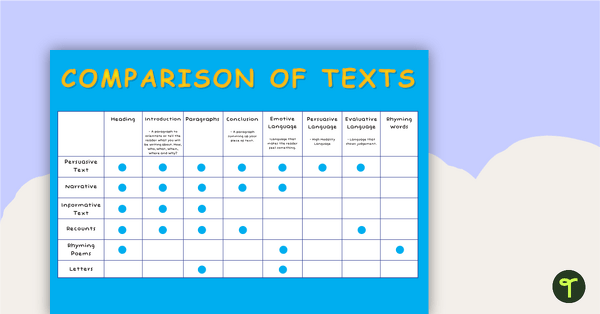
Comparison of Text Types Posters
A poster comparing the structure and language features of various text types.
- Plus Plan
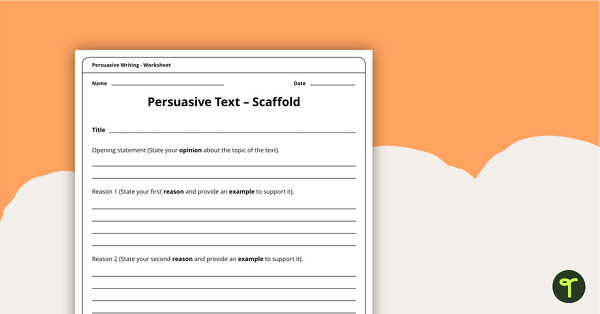
Persuasive Texts Writing Scaffold
A one page scaffolding sheet which can be used to write a persuasive text.
- Plus Plan
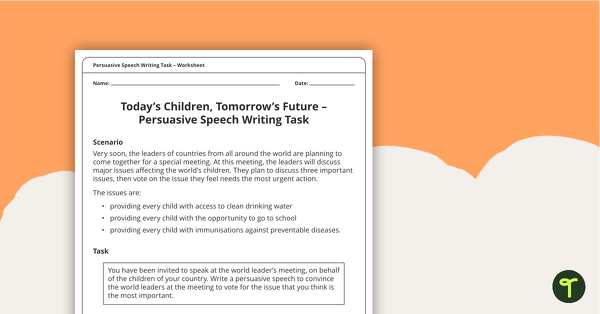
Persuasive Speech Writing Task
Practise writing a persuasive text with this speech writing task.
- Plus Plan
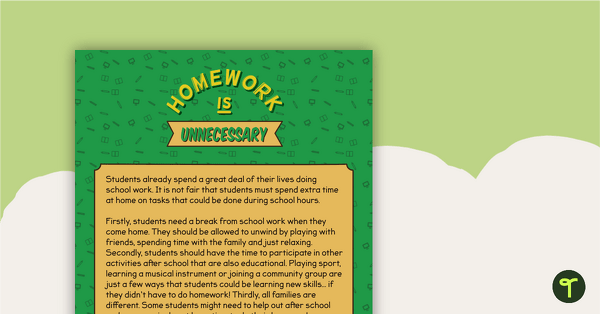
Sequencing Activity - Homework is Unnecessary (Persuasive Text)
A sequencing task using a persuasive text.
- Plus Plan
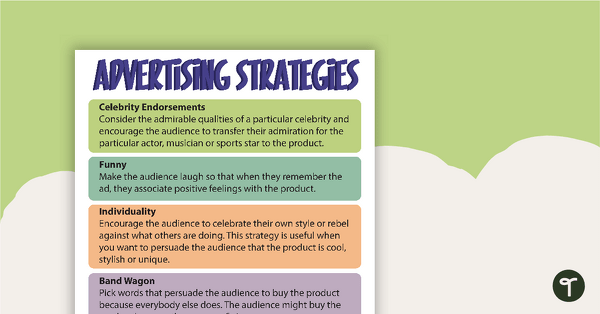
Healthy Lifestyle - Advertising Challenge
A fun advertising challenge to use in the classroom for students to persuade others to live a healthy lifestyle.
- Plus Plan
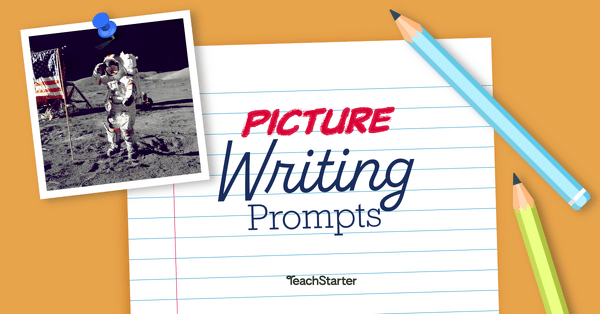
Picture Writing Prompts
Introducing the perfect picture writing prompts to encourage creative writing in your primary students! Explore 60 visual prompts made just for the primary classroom.
- Plus Plan
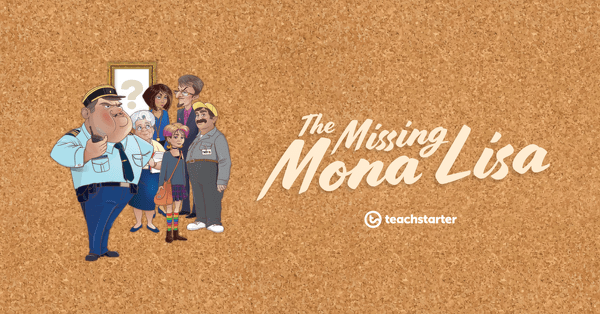
The Missing Mona Lisa — Integrated Learning Adventure
The Mona Lisa has vanished! This immersive tale of lies and intrigue takes students on an adventure to the Louvre, France. Can your students find the clues and crack the case?
- Plus Plan
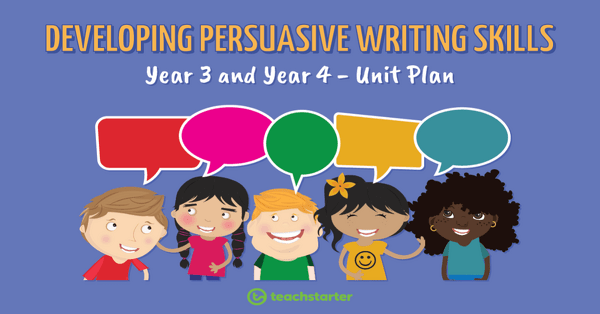
Building an Opinion Using Persuasive Devices
A 60 minute lesson in which students will use persuasive devices to build a convincing opinion about an issue.
- Plus Plan
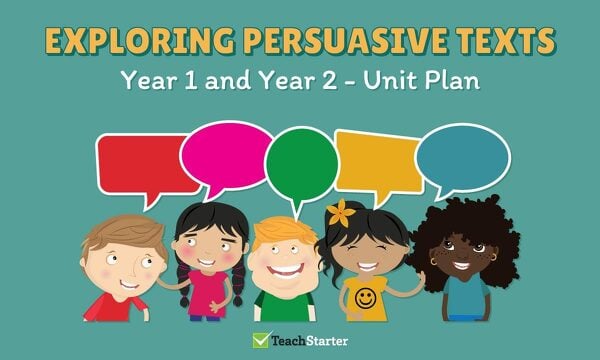
Exploring Persuasive Texts Unit Plan - Year 1 and Year 2
This English unit has been designed to introduce the persuasive genre to younger students; specifically, the purpose, structure and language features of persuasive texts.
- Plus Plan
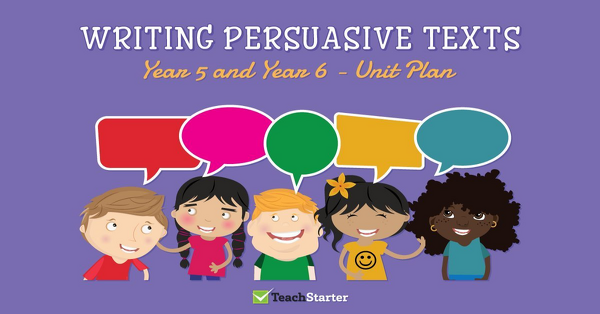
Persuasive Speeches - Constructing
A 60 minute lesson in which students will construct a persuasive speech using appropriate text structure, language features and devices.
- Plus Plan
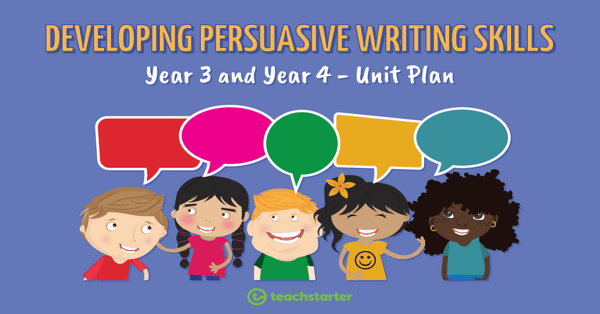
Constructing a Persuasive Paragraph Using OREO
A 60 minute lesson in which students will identify and use the correct paragraph structure when writing a persuasive text.
- Plus Plan
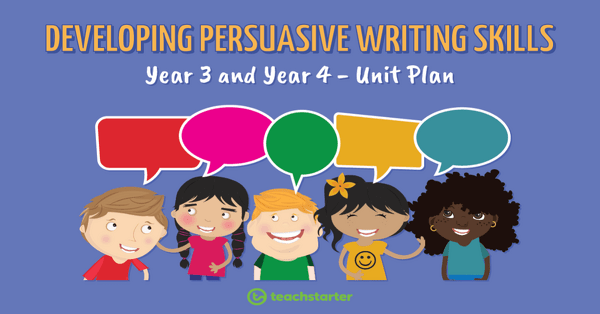
Persuasive Texts - Text Structure
A 60 minute lesson in which students will identify and explore the structure of persuasive texts.
- Plus Plan
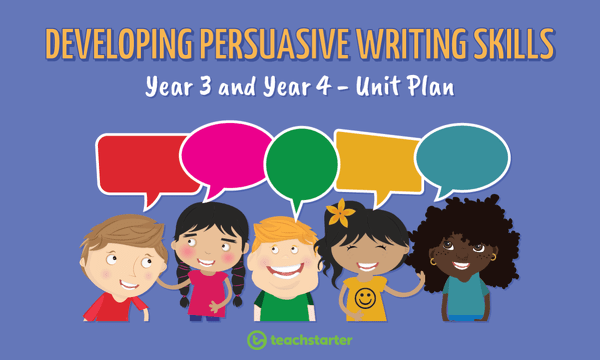
For or Against?
A 60 minute lesson in which students will investigate point of view in relation to a situation or issue.
- Plus Plan
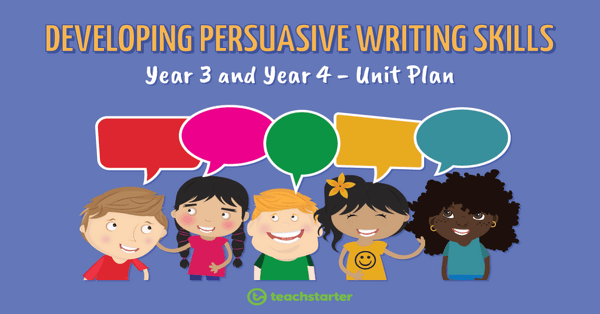
Using a Stimulus - Independent Writing
A 60 minute lesson in which students will independently write a persuasive text, using appropriate text structure, language and features.
- Plus Plan
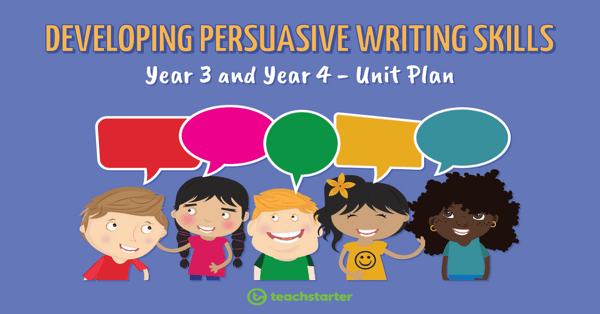
Applying Proofreading and Editing Skills
A 60 minute lesson in which students will learn and apply proofreading and editing skills.
- Plus Plan
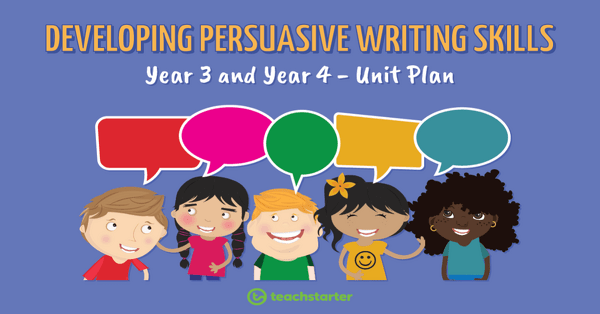
Using a Persuasive Prompt - Shared Writing
A 60 minute lesson in which students will use a writing prompt and scaffolding sheet to write a persuasive text in pairs.
- Plus Plan
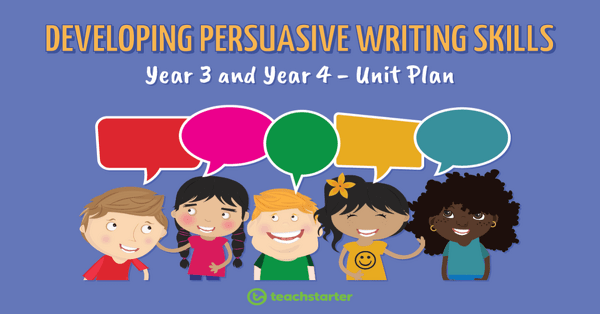
Introducing Persuasive Devices
A 60 minute lesson in which students will explore how persuasive devices can be used to strengthen a point of view.
- Plus Plan
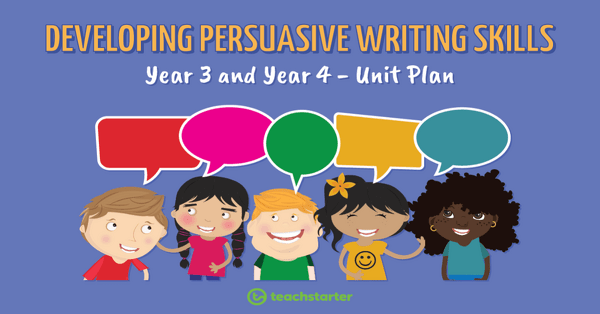
Exploring Modality
A 60 minute lesson in which students will explore how modal words are used to express degrees of certainty in persuasive texts.
- Plus Plan
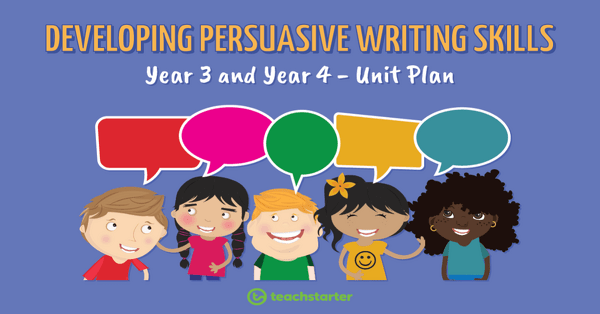
Persuasive Texts - Language Features
A 60 minute lesson in which students will identify and explore the language features of persuasive texts.
- Plus Plan
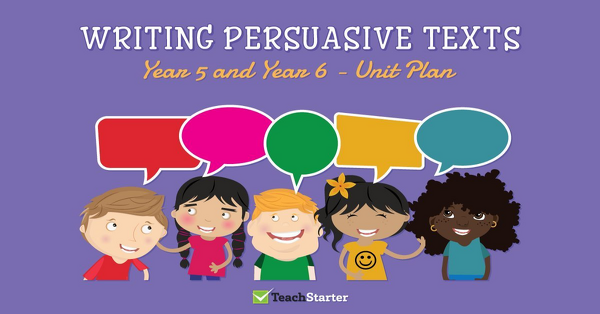
Persuasive Speech - Researching
A 60 minute lesson in which students will research evidence to include in a persuasive speech about a topical issue.
- Plus Plan
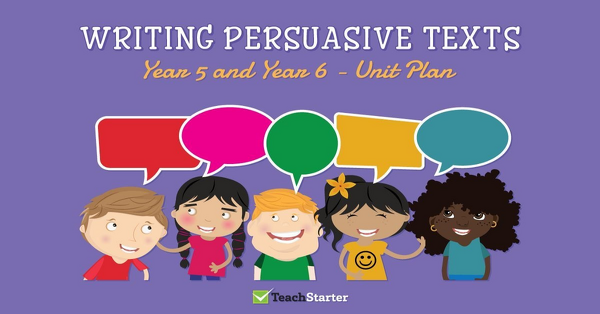
Constructing a Persuasive Paragraph
A 60 minute lesson in which students will identify and use correct paragraph structure.
- Plus Plan
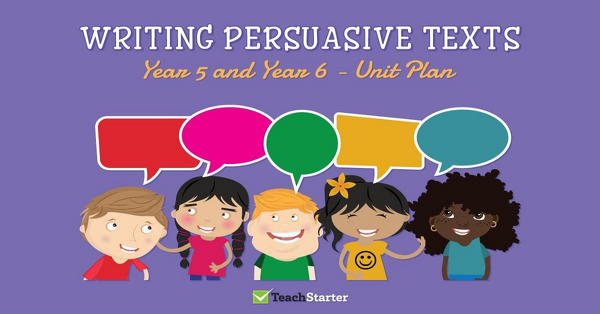
Persuasive Texts - Text Structure
A 60 minute lesson in which students will identify and explore the structure of persuasive texts.
- Plus Plan
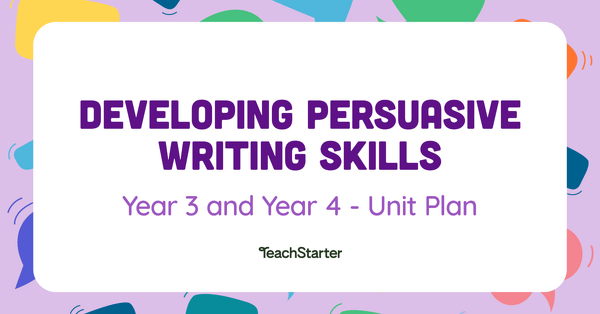
Developing Persuasive Writing Skills Unit Plan - Year 3 and Year 4
This English unit addresses the genre of persuasion; specifically, how to write a well-structured persuasive text.
- Plus Plan
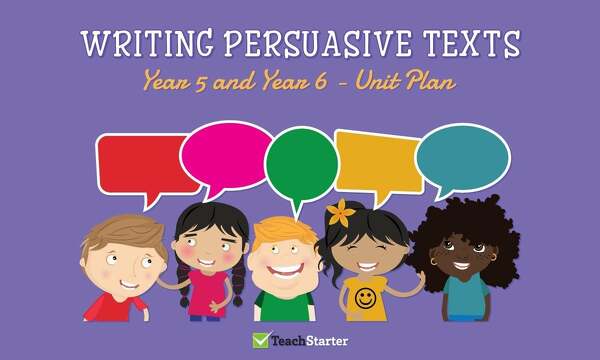
Writing Persuasive Texts Unit Plan - Year 5 and Year 6
This English unit addresses the genre of persuasion; specifically, how to write an effective persuasive text.
- Plus Plan

Applying Proofreading and Editing Skills
A 60 minute lesson in which students will learn and apply proofreading and editing skills.
- Plus Plan
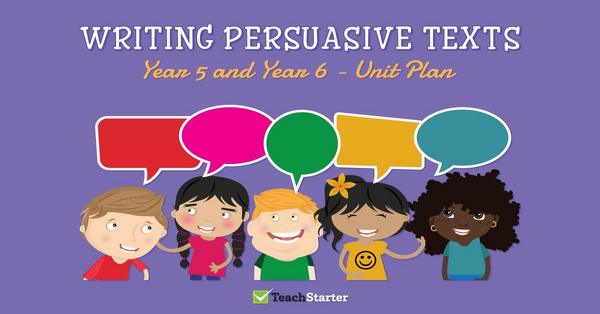
Shared Writing - Persuasive Letters
A 60 minute lesson in which students will write a persuasive letter using appropriate text structure, language features and devices.
- Plus Plan
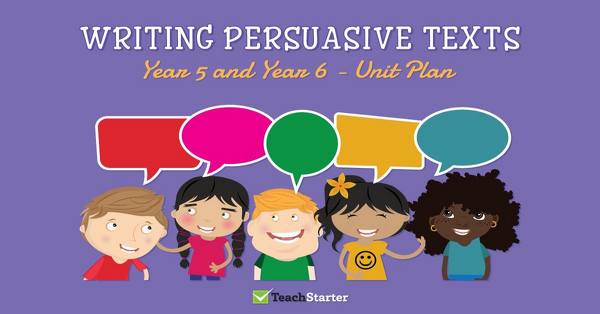
Modelled Writing - Improving Persuasive Texts
A 60 minute lesson in which students will improve a persuasive text by applying knowledge of persuasive language features and devices.
- Plus Plan
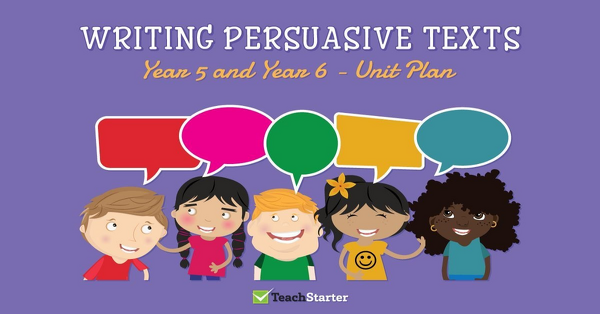
Using Persuasive Devices
A 60 minute lesson in which students will identify and explore persuasive devices.
- Plus Plan
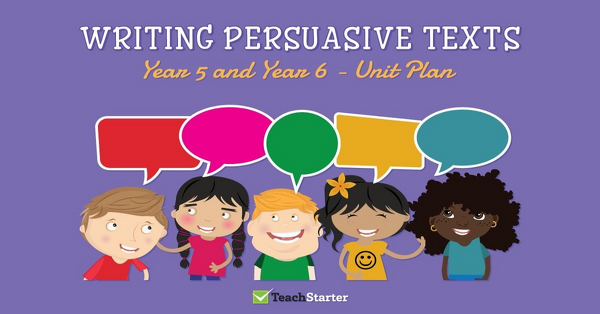
Persuasive Texts - Language Features
A 60 minute lesson in which students will identify and explore the language features of persuasive texts.
- Plus Plan
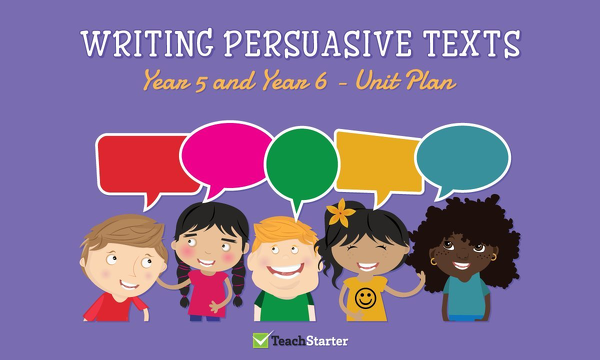
Convince Me, If You Can!
- Plus Plan
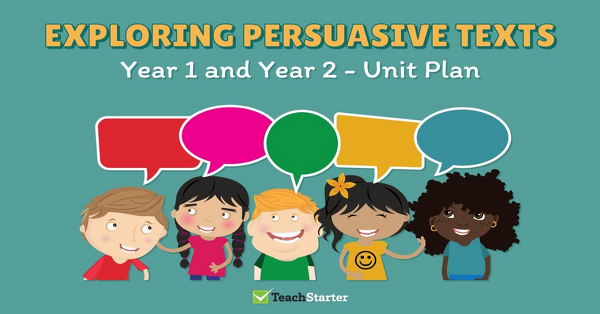
Eat Your Peas - Independent Writing
A 60 minute lesson in which students will independently construct a simple persuasive text about a familiar situation.
- Plus Plan
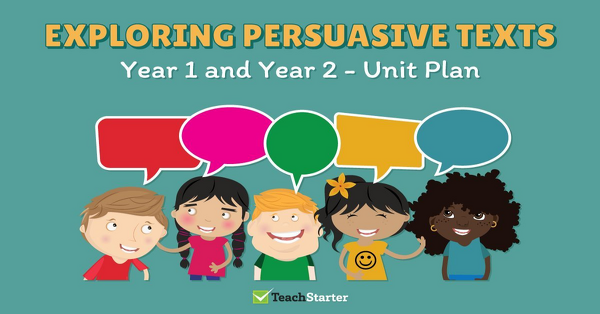
What Pet Should I Get? - Shared Writing
A 60 minute lesson in which students will construct a simple persuasive text on a familiar situation in pairs.